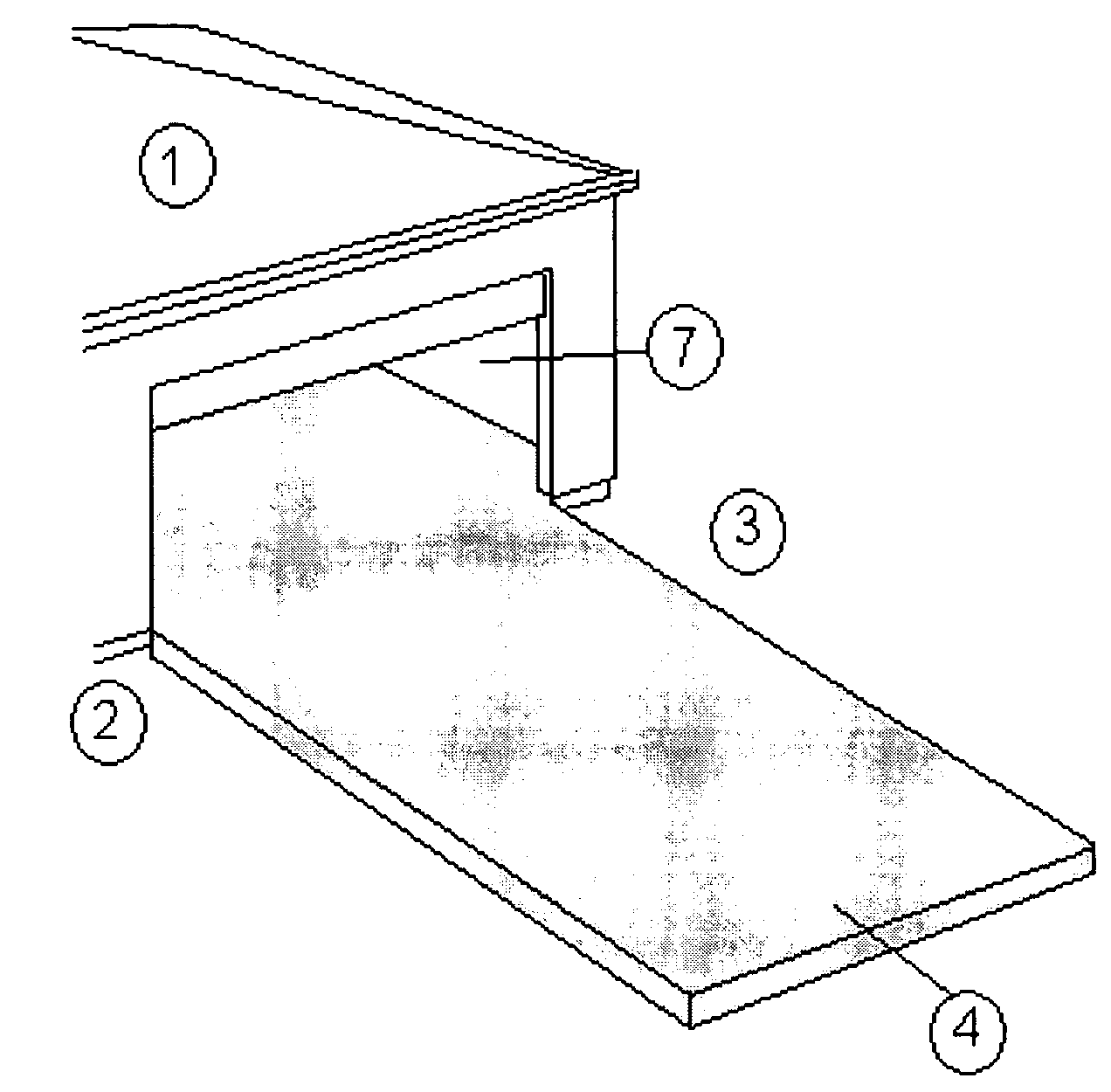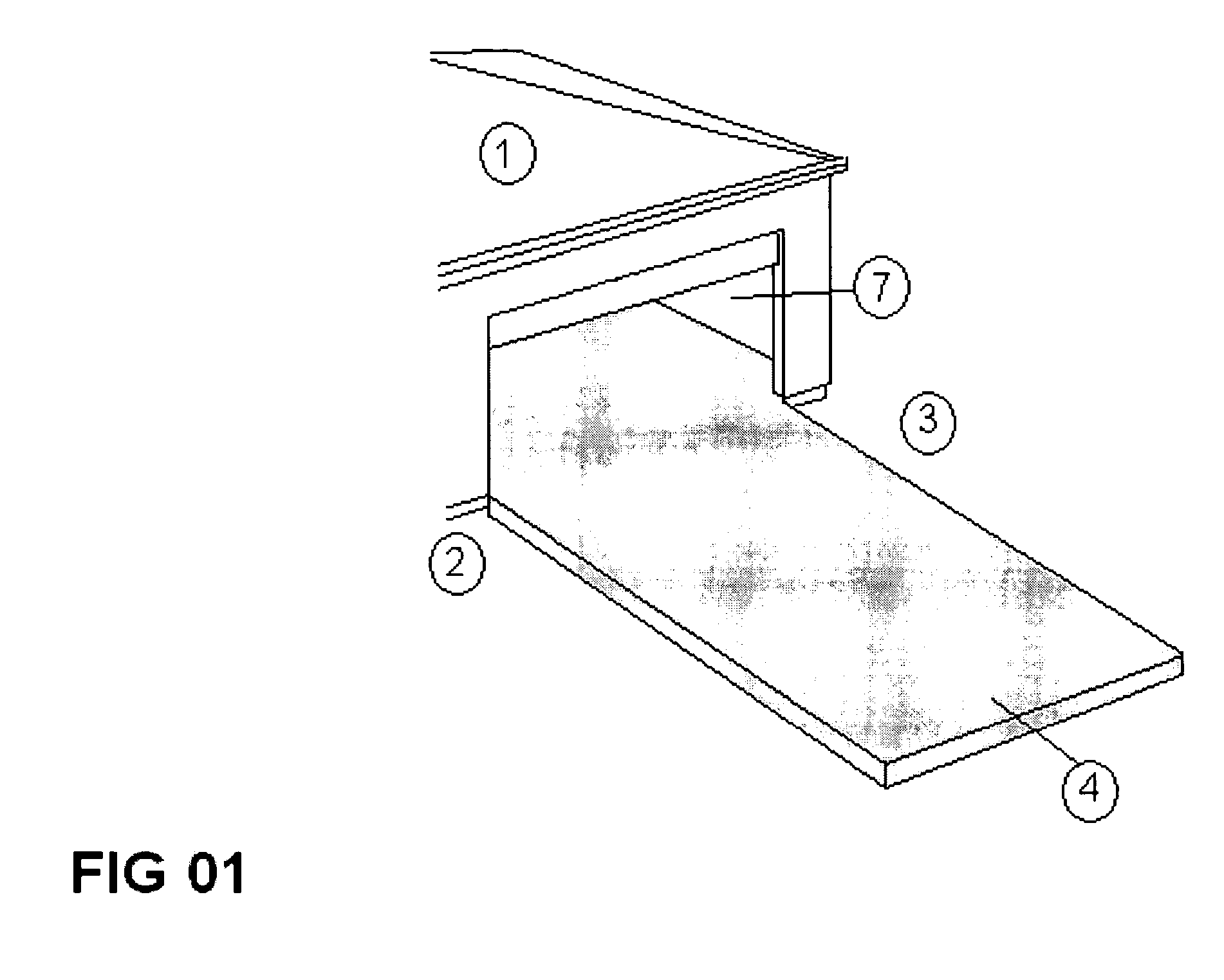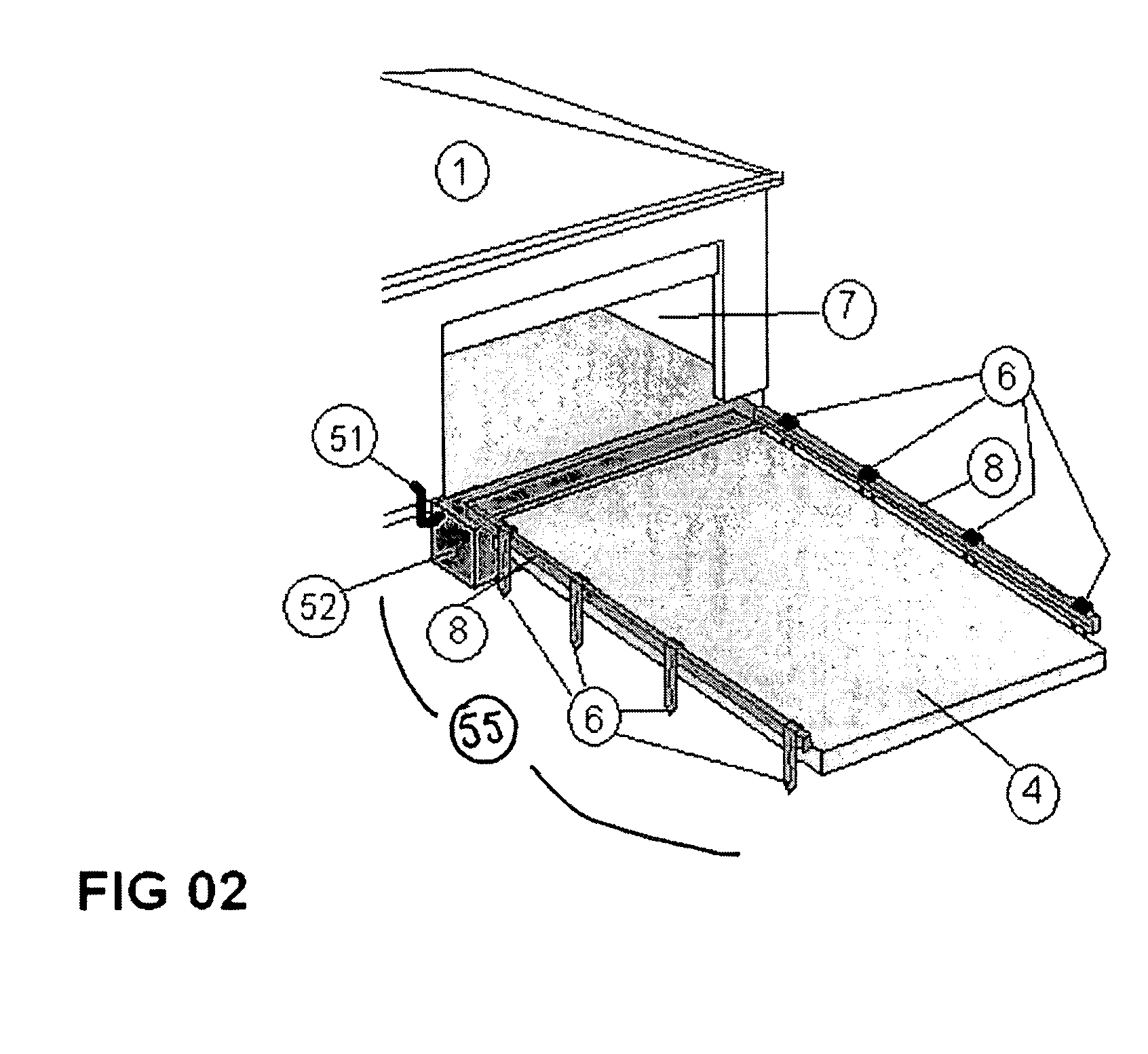Deployment system for thermal radiating materials
a technology of thermal radiation and deployment system, which is applied in the direction of process and machine control, and instruments, can solve the problems of increasing the wear and tear of the mat system, requiring expensive repair of the thermal element, and the failure of the embedded coil or element, so as to reduce the input energy and improve the reliability. the effect of reliability
- Summary
- Abstract
- Description
- Claims
- Application Information
AI Technical Summary
Benefits of technology
Problems solved by technology
Method used
Image
Examples
Embodiment Construction
—ELEMENT LISTING
[0062]
Listing of ElementsElement #Building or structure 1Support surface 2Deployment unit power source 3Driveway surface area 4Flexible thermal mat (material) 5Anchoring spike 6Open bay 7Track and rail assembly 8Thermal mat 5 one-half deployed 9Thermal mat 5 three-quarters10deployedThermal mat 5 fully deployed11Track & rail assembly end cap12Idler block assembly13Drive cable14Idler15External sensor collection pod16Cable guide tube17Drive shaft bushing18Environment sensor19Thermal mat roller axle20Thermal mat roller axle21Cable drive clamping tube22assemblyCompression screws23Cable tube guide24Clamping tube assembly beveled25surfacesProgrammable logic controller26Thermal mat anchoring point27Thermal mat drive axle bushing28and axle mounting slotThermal mat spool axle bushing29and axle mounting slotDeployment system housing30Housing re-enforcement rib or31supportThreaded adjusting bolt32Idler plate tongue33Drive cable idler stop foot34Adjusting bolt lock nut35Deploymen...
PUM
 Login to View More
Login to View More Abstract
Description
Claims
Application Information
 Login to View More
Login to View More - R&D
- Intellectual Property
- Life Sciences
- Materials
- Tech Scout
- Unparalleled Data Quality
- Higher Quality Content
- 60% Fewer Hallucinations
Browse by: Latest US Patents, China's latest patents, Technical Efficacy Thesaurus, Application Domain, Technology Topic, Popular Technical Reports.
© 2025 PatSnap. All rights reserved.Legal|Privacy policy|Modern Slavery Act Transparency Statement|Sitemap|About US| Contact US: help@patsnap.com



